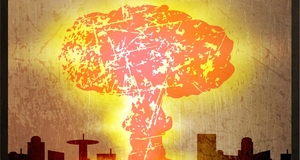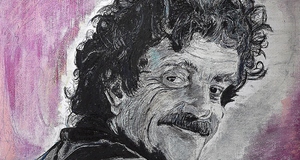Developing Weirdness Through Cartographic Destabilization in Jeff VanderMeer's Annihilation
By
2015, Vol. 7 No. 05 | pg. 2/2 | « The explanation’s endearing nature comes from the biologist seeing the psychologist begin to form a sense of place in this new map of measurements and facts; however she sees that it is not enough to satisfy the whole of Area X. The biologist concludes that in using these measurements, the psychologist is “trying to reassure herself,” (VanderMeer, 2014, p. 18) admitting that the sense of unease and dislocation is still present with the psychologist and that she can’t completely disregard a lack of the tower’s presence on the expedition’s physical map of Area X. By using the expedition’s physical map and the psychologist’s map of measurements, VanderMeer juxtaposes the lack of the tower’s presence on the physical map with Area X’s light house which does appear. The biologist explains how the lighthouse’s presence provides the expedition with a sense of “relief” (VanderMeer, 2014, p. 21) when it is seen. It becomes an anchor for the expedition team as they descend into the tower because the lighthouse makes sense in the chaotic complexity of Area X. It comes to represent a lingering sense of place and self from before the weird began to, in effect, colonize the expedition members. “It’s appearance on both the map, and in reality reassured them, anchored them,” (VanderMeer, 2014, p. 21) the biologist explains, also mentioning that even understanding the original function of the lighthouse provided that sense of relief. The lighthouse becomes a wholly different symbol than the tower, one that only emphasizes the destabilizing effect on the expedition team’s (and therefore the reader’s) cognitive map of Area X. They see that something makes sense. Something follows the facts and measurements they are attempting to rely on which reinforces that these maps are still in some way reliable. The tower, though, has no knowable functions and as the twelfth expedition descends into the tower’s depths it fails to reveal any hints of satisfying that need for function.The biologist tells us, “The psychologist might recite the measurements . . . of the tower, but those numbers meant nothing . . . without context, clinging to those numbers was a form of madness” (VanderMeer, 2014, p. 22). We see that in the expedition members weirdness has colonized and deformed their sense of place into something uncanny even to themselves. Their cognitive maps have mutated. Clinging to what should be reasonable and reliable becomes madness and madness becomes what drives the expedition team without them realizing Area X’s effects on them until it is too late. In Annihilation, madness becomes the new way in which we interpret cartographic destabilization and the figure of the map in the novel, particularly when we consider the structure of the novel as a frame narrative, fully yet subtly revealed throughout the course of its chapter. In the frame narrative, madness and cartographic destabilization become intertwined as a new cognitive map is thrown into the author/reader dialectic; that of the character telling the story and how it is told. Since cartographic destabilization occurs when a reader’s cognitive map of a piece of literature is disrupted or dislocated by the cartographic projection of the author on the written page, that narrative itself can become one such projection, as is the case with Annihilation and the biologist. The novel is framed as the biologist’s journal and though attention is not brought to this fact often, there are subtle reminders throughout the course of Annihilation. The biologist describes the journal in the novels earlier chapters, however, perhaps the most jarring reminder comes when the biologist tells us, or more aptly, writes of her encounter with the hundreds of expedition journals found in the lighthouse: “Can you really imagine what it was like in those first moments? Peering down into that dark space, and seeing that? Perhaps you can. Perhaps you’re staring at it now,” (VanderMeer, 2014, p. 101). It is here that cartographic destabilization actualizes itself and the map of language in the novel is given form. For a brief moment, the reader is actively brought into the world of Area X as an active participant, reading the biologist’s journal, and a synthesis of the dislocating dialectic between the weird spaces of Area X and the reader occurs, though rather than creating a sense of place for the reader, the effect is something more uncanny. The biologist has at this point been changed or transmuted by the weird spaces of Area X. She has become a being whose sense of place is more aligned with the weirdness of the tower and the desolation around her than her previous world. It is a change so great that her former comrades within the twelfth expedition see her as a “flame” when she gets close to them: “You were a flame,” [the psychologist] said and I had a brief vision of my brightness made manifest. “You were a flame, scorching my gaze. A flame drifting across the salt flats, through the ruined village. A slow-burning flame, a will-o’-the-wisp, floating across the marsh and the dunes, floating and floating, like nothing human but something free and floating . . .” (VanderMeer, 2014, p. 125) This transmutation turns the biologist into an Uncanny Narrator, further distancing the reader from finding a sense of place by eliminating their ability to wholly identify with the novel’s protagonist, eliminating any traditional sense of catharsis to be garnered from the character. The frame narrative becomes changed, the very map guiding us through Area X uncanny and untrustworthy. The horror of this is not just that we cannot trust our own senses or sense of place within Area X, within weird spaces, but neither can we trust our own selfhood as it can become changed as well. Cartographic destabilization creates the sense of weirdness by projecting symbols and metaphors that signify dislocation and disorientation within the literature. Language is the map in which we follow literature by and if we cannot form our own stable cognitive map in our reading of said language, our sense of place becomes disturbed and uncanny. This all occurs as a dialectic that dislocates us from our sense of place, destabilizing our own projections of a cognitive map upon the literature. It is in this that weirdness becomes not just a feeling garnered from reading some forms of fiction, but a very mode in which the literature is written, constructed by the spatial signifiers of dislocation and disorientation. In some way, it becomes the literature’s purpose to express that horrific “dissatisfaction with and uncertainty about reality” evoked by the cosmic horror artists of the early 20th century, signifying yet also satisfying an admittance of the weirdness in our everyday world. ReferencesBarron, L., & Kelly, M. (Eds.) (2014). Year’s best new weird. Canada: Undertow Publications. de Certeau, M. (1984). The practice of everyday life. (S.F. Rendall, Trans.) . Los Angeles, CA: University of California Press. (Original work published in 1980) Jameson, F. (1991). Postmodernism or, the cultural logic of late capitalism. Durham, NC: Duke University Press. Soja, E. (1989). Postmodern geographies: The reassertion of space in critical social theory. Brooklyn, NY: Verso Books. VanderMeer, A., & VanderMeer, J. (Eds.) (2011). The weird: A compendium of strange and dark stories. New York, NY: Tom Doherty Associates, LLC. VanderMeer, J. (2014). Annihilation. New York, NY: Farrar, Straus and Giroux. Suggested Reading from Inquiries Journal
Inquiries Journal provides undergraduate and graduate students around the world a platform for the wide dissemination of academic work over a range of core disciplines. Representing the work of students from hundreds of institutions around the globe, Inquiries Journal's large database of academic articles is completely free. Learn more | Blog | Submit Latest in Literature |


















